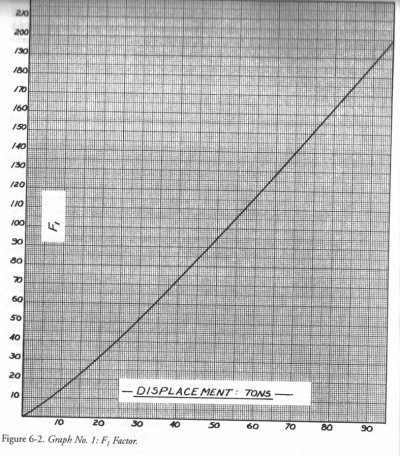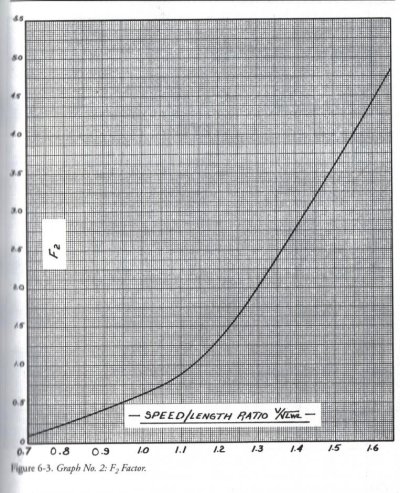What is missing from this discussion is how to use Beebe F1 and F2 graphs.
Simply put, you find a number on the F1 graph and multiply it by another number from the F2 graph. F is for Factor best I can tell.
The F2 graph is the same irregardless of the boat since the graph is all about the F2 factor for a given Speed Length Ratio(SLR). I think the graph is based on Froude's numbers.
The speed of a boat is the SLR times the square root of the water line length of the boat.
At the bottom of the F2 graph, find the given SLR, go up to the dark line and then go back to the left to find the F2 factor. I wish Beebe had just given us the F2 factor for SLR 1.0, 1.1, 1.2, 1.3 and 1.34 and 1.4 and been done with it. Sure would save my eyes from looking at those little lines.....

The F1 factor is based on the displacement of the boat in LONG tons, ie, 2,240 pounds, not 2,000. From the number of long tons on the bottom of the graph go up to the line drawn across the page and then follow the horizontal line to the left side to find the F1 factor.
F1 x F2 gives you the HP required to go at a given SLR.
Skene and Geer also have equations to calculate the required HP for a given boat.
Skene's equation generates a lower HP than Beebe with Geer's equations, he has three of them that I know of, that are higher than Skene's or Beebe's.
Later,
Dan



